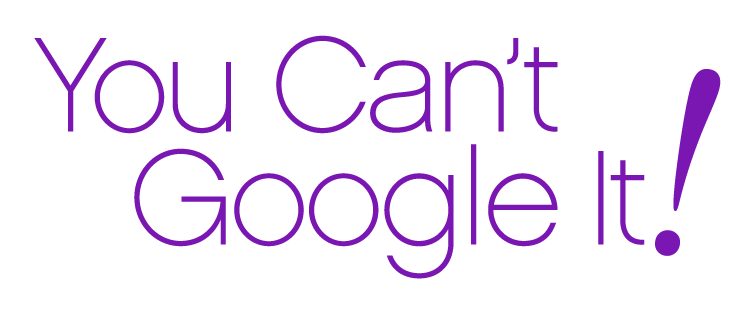Role Shifts: Creative Initiatives and Action Steps - PART TWO
/[Part One can be found in the July newsletter and at youcantgoogleit.com under Articles and Blogs]
Despite long existing and accepted business structures, today's client and personnel pressures are bringing changes with (many) more to come. Change will present challenges as well as opportunities at every level. Accommodating more generations and functions working together to retain valuable talent will require role shifts not contemplated in past decades. Open minds and flexibility can make it work and result in a stronger, happier organization.
Relatively New and Potential Types of Roles
The economic and health pandemics have forced organizations and individuals to rethink and get creative with new roles. Others have been developed over the last decade for recognized needs.
Some recent examples are in the areas of strategy, wellness, knowledge management, training, information technology, AI and innovation and roles in business development with greater authority than offered in the past.
Already fairly common roles and titles are directors of training, coaching, mentoring and “elder statesman” to continue the long-established bond with clients, customers and referral sources mentor, trainer, coach, recruiter or ombudsperson. Some of these have been filled by senior professionals and executives shifting.
The role of a sort of “learning scout” for conferences, webinars, podcasts and teaching to promote growth of personnel could be a welcome addition.
Dealing with Resistance and Structural Change
Necessary steps to make role shifts more acceptable (and maybe even appealing) to individuals require at least three components.
Convey Respect and Positive Recognition
Role shifts are an organizational issue; the desired result is a benefit for the firm in terms of filling a needed skill or function, as well as a benefit to the individual in maintaining a career, paid employment continuation and self-worth. Especially in the self-esteem and self-worth aspects, the role shift must not feel like or be regarded by colleagues as a demotion. Today, overdue changes in culture and mindset may be necessary to overcome resistance.
In the past, there were fewer generations at work.
There were fewer steps in established hierarchies and lattices and fewer types of financial arrangements within a firm.
That meant people had somewhat clearer expectations.
Emphasize career legacy-making
Fulfillment and purpose are important to high achieving professionals. If asked to move to an unfamiliar role, especially when letting go of a leadership position as asked for or required, remind them of their career legacy. When consulting and coaching firm leaders and senior lawyers, I lead them through exercises to identify what they want to be remembered for at work, reflect on their achievements and proud moments.
Provide appropriate compensation
Role-shifters may or may not need to maintain high compensation. But financial compensation (as well as non-financial recognition) is an important indication of their value to most people. Fulfilling such roles as mentor, trainer, coach, recruiter or ombudsperson, as well as other contributions should be paid commensurate to value the firm receives.
In assessing value, consider the loss, directly and indirectly, to the firm without those roles being competently fulfilled.
How Individuals Can Achieve More Challenging Roles
These initiatives should be useful for any generation at any level and phase of career.
Look for problems that need solving and suggest, volunteer or accept a role shift to work on solutions. Better processes, procedures, improving client or employer experience, more external visibility, etc. Become a go-to problem solver.
Offer to provide support and implement a juicy project around, for example: wellness; diversity, equity and inclusion; knowledge transfer; cross-generational conversation; a new recruit orientation approach.
Get a commitment in advance from the firm about how the work or project will be valued and compensated.
Make sure you get appropriate recognition, whether financial or non-financial and learn when to say "no" when an overload will affect your ability to produce high quality work.
If you get the go-ahead to work on a project that you suggest, be ready to act on implementation, including lining up needed help and resources. Track costs carefully so there won't be surprises to the firm leaders.
Learn how to use questions to make suggestions without appearing to criticize others or appear clueless.
Speak up when you have comments to help others. Be generous with advice and feedback without arrogance or appearing condescending.
Be psychologically prepared for pushback. If your idea is rejected or your commitment to improvement isn't recognized, rethink it or go on to another suggestion. Don't take it as a failure especially as a younger professional or a senior attorney seeking a role to maintain a position. Persistence pays off, so keep trying with additional arguments and seek wider support.
© Phyllis Weiss Haserot 2020
Call to Action: What new roles would you like to see created? How would they contribute to increasing diversity, equity and inclusion in mid- and senior levels and across the generations? Please send your thoughts to pwhaserot@pdcounsel.com.


